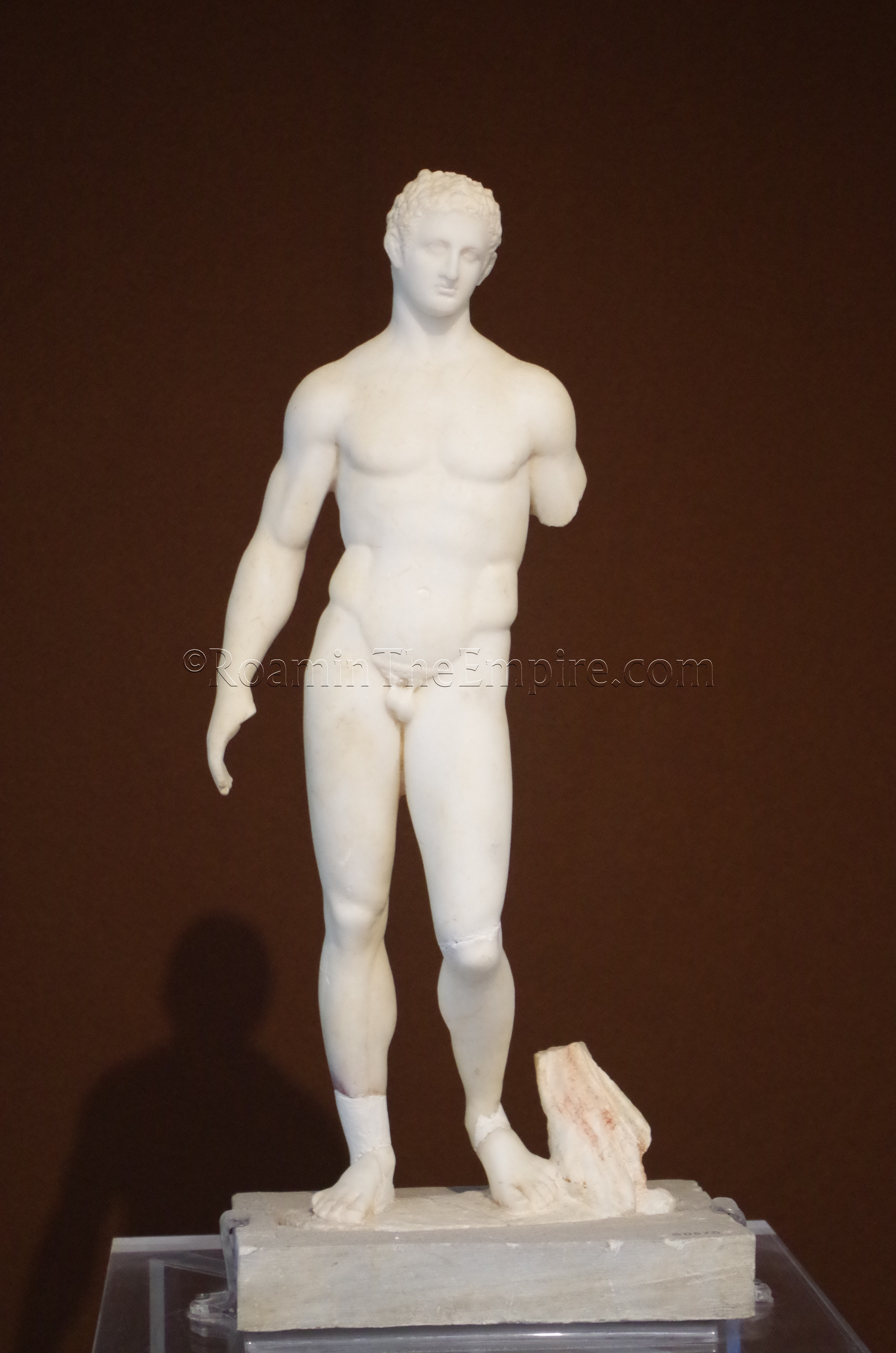
Continued From Syracusae – Part I
Just to the west of the park, though outside, are some rows of tiered seating associated with a possible viewing area, referred to as the ‘linear theater’. This may be the remains of a 5th century BCE, or earlier, theater that preceded the theater in the park. It has also been theorized that it could perhaps be associated with the sanctuary of Apollo Temenites that was located on the hill, Probably on the highest terrace above the portico terrace, and which is not accessible at the park. Due to time constraints and access, I was not able to visit it, but it is located just to the west of the theater between the first of a few switchbacks in the road up the Temenite Hill, Viale Giuseppe Agnello. There are no sidewalks and very little shoulder to walk on going up, so, using caution is advisable.
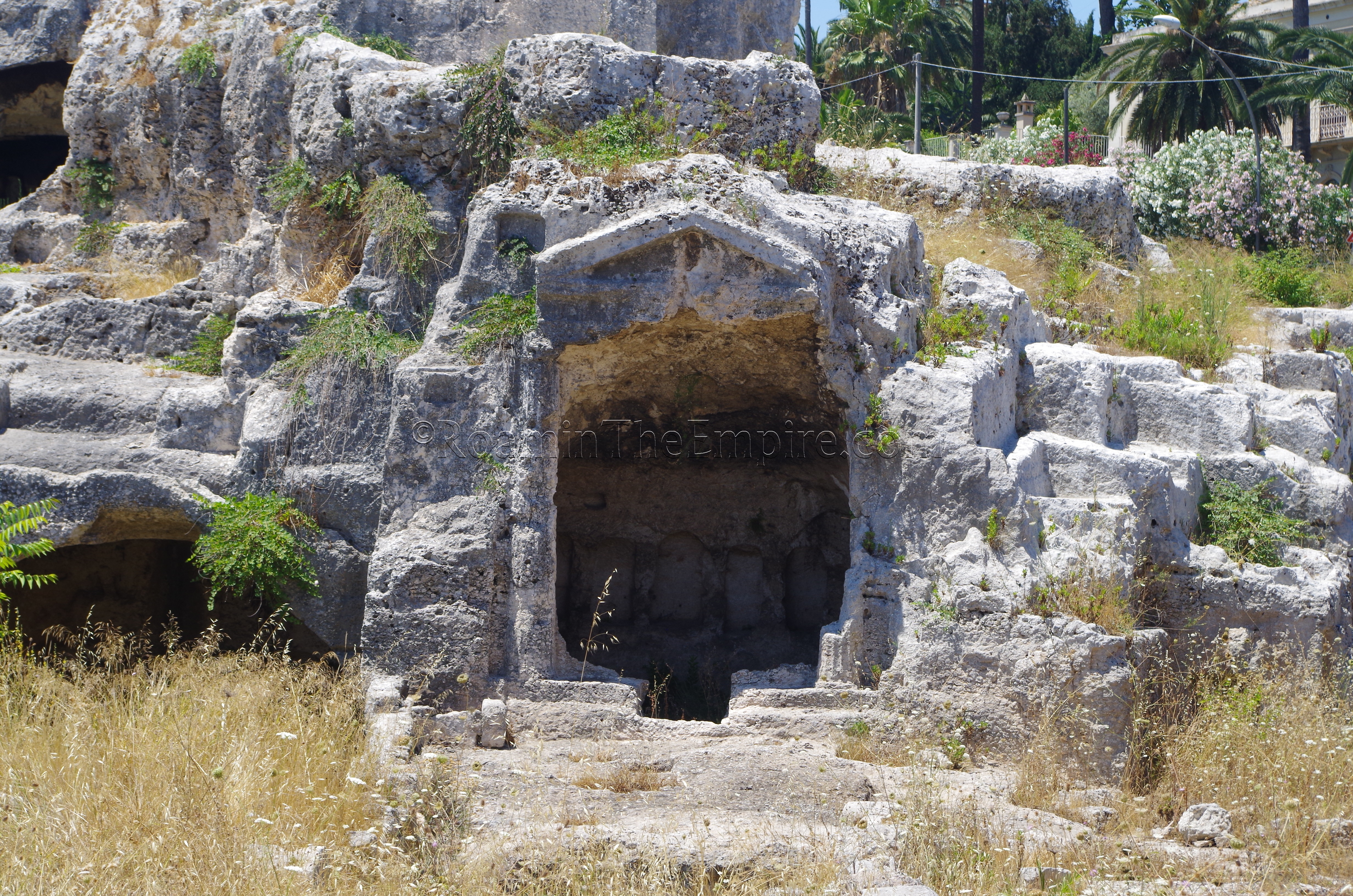
Just to the northeast of the park, technically within the grounds of the park, but not accessible from inside, are the remains of a rock cut necropolis. The remains can be seen along Via Ettore Romagnoli, heading north from the intersection where the ticket office and entrance of the archaeological park are. A number of these tombs, dating from the Greek through the Byzantine periods, can be seen from the sidewalk along the road, but at the very eastern point of the necropolis is the most well-known of these, the so-called Tomb of Archimedes. The tomb is distinguished by its ornate (comparatively) rock-cut entrance and prominent location. This, however, is not the tomb of the inventor, but rather seems to be a 1st century CE Roman tomb. The location of the actual tomb of Archimedes is unknown, but according to Cicero was located outside the Agrigentine Gate and in a state of neglect when he was quaestor in Sicily. A mausoleum uncovered in the courtyard of the Hotel Panorama (at Via Necropoli Grotticelle 33, but not publicly accessible) has sometimes been referred to as his or the tomb of Agathocles, though there is no evidence to suggest it is either.
A few blocks to the east of the entrance to the Parco Archeologico Neapolis is the Museo Archeologico Regionale ‘Paolo Orsi’, located at Viale Teocrito 66. The museum is open Tuesday to Saturday from 9:00 to 18:00 and on Sundays and holidays from 9:00 to 13:00. The museum is closed on Mondays. Admission to the museum is 8 Euro, or again, a combination ticket for the museum and the archaeological park can be purchased for 13.50 Euro.
As one might expect, a large portion of the collection in the museum comes from the Greek period of the city, though there are a wide range of artifacts from throughout the history of the area, dating back from prehistoric through to Byzantine. The Greek ceramics and architectural remains of the various temples from the city (and the wider hinterland of Syracusae) are quite plentiful and displayed in a modern and meaningful manner. The numismatic collection, which has a controlled entrance, is particularly impressive and displays some fine examples of coinage from the whole of Sicily.
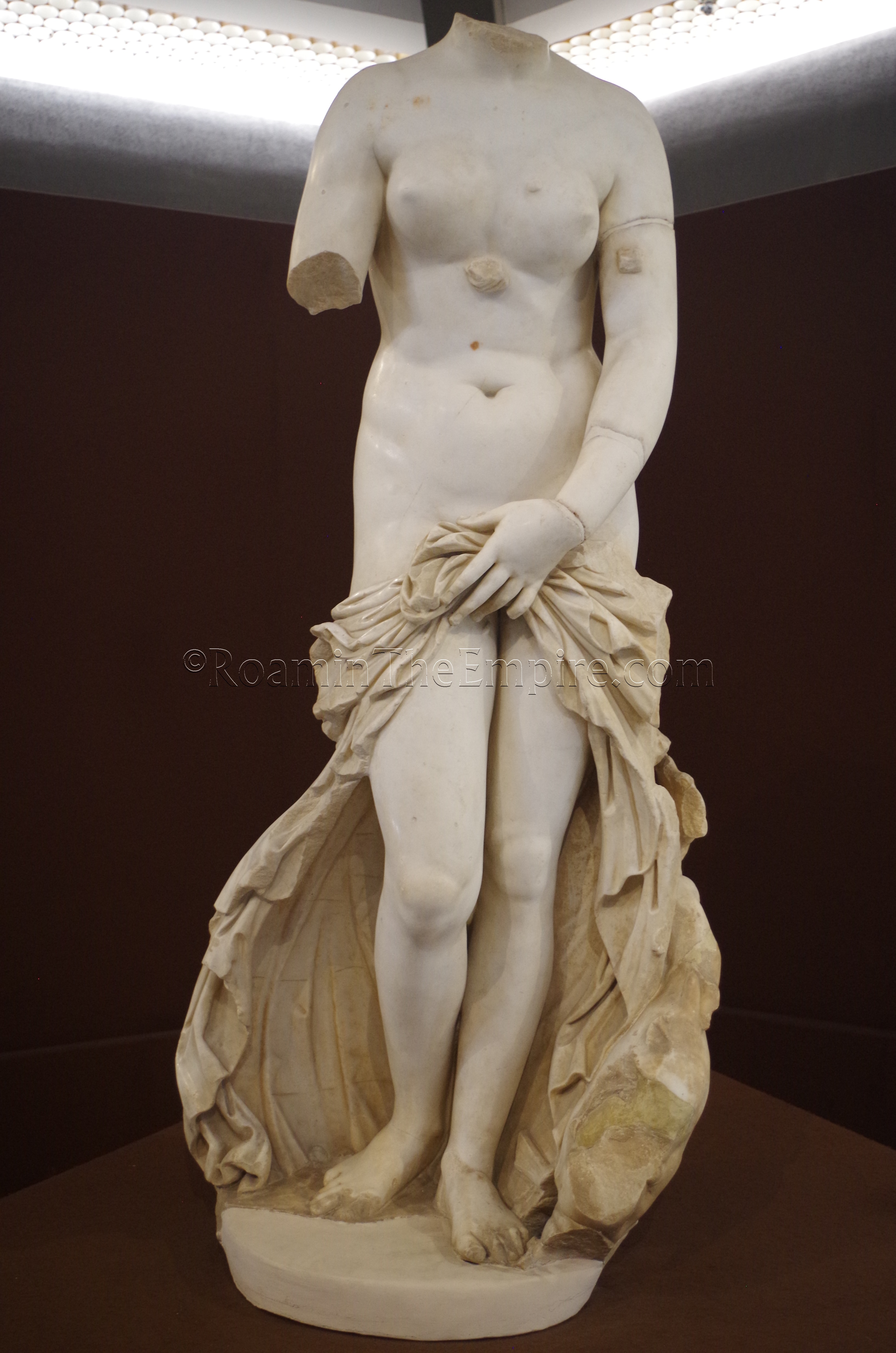
One of the particular highlights of the collection, is of course, the famous Venus Landolina, a 2nd century Roman statue of Venus based on a 2nd century BCE Greek statue, housed in the museum. There are, however, a number of well-preserved pieces of Roman statuary. Overall, the Roman collection is relatively small in comparison to the overall size of the museum collection, but, the pieces are quite nice. There’s a garden outside the museum that has some larger, more common objects, such as anchors. There are also a few funerary statues displayed just outside the entrance.
The museum is quite nicely organized and presented. It has a modern, if not a little bit cluttered, feel to it. The museum seems to be the primary repository of artifacts for pretty much that entire southeast tip of the island, and so the wealth of material is somewhat overwhelming at times, particularly for the Greek collection. It does a fairly effective job of presenting that material in a meaningful way, even if it does perhaps get caught up in the pitfall of perhaps displaying an excess of objects at times. I spent about 2 hours in the museum, but, because I was trying to fit a lot into that day trip, I did move a little quickly through some of the Greek sections, and, with no time constraints, I probably would have easily been able to spend closer to 3 hours there.
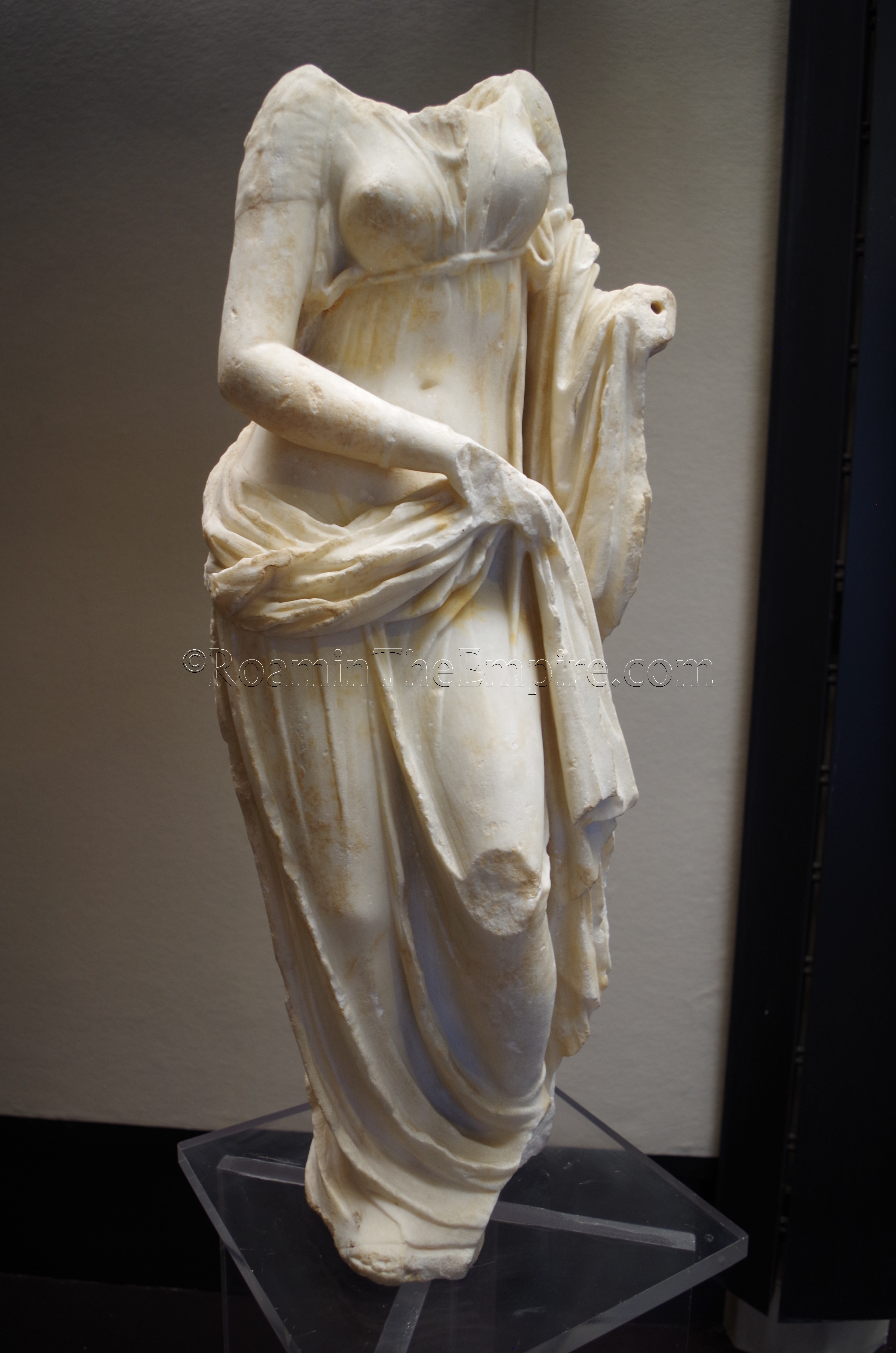
There are two catacombs close to the archaeological museum, one to the east and one to the west; the Catacomba di Vigna Cassia and the Catacombe di San Giovanni, respectively. I was not able to visit either one during my time due to a few reasons. First, I was never really clear on whether or not one needed to make a reservation to gain access. There are posted hours of operation online, but, sometimes those are just used to give a range of when access is potentially available. I tried to find the Catacombe di San Giovanni after I visited the museum, but was unable to locate any kind of entrance or information, which lead me to believe that a prior arrangement was necessary. In any case, the Catacomba di Vigna Cassia, located at Via Augusto Von Platen 38, are theoretically open Monday through Friday from 11:00 to 13:00 and from 14:30 to 17:00. The lack of an admission scheme posted, and the prominent display of contact information on the website leads me to believe that these catacombs are indeed reservation only for access. The organization maintaining them can be reached at +39 0931 64694 or by email at info@kairos-web.com. The Catacombe di San Giovanni, located at Largo San Marciano, and have a very convoluted schedule that, I imagine is subject to change, so rather than replicate it here, I think just linking to the page would be more helpful. The admission and contact information are also available on the page.
Across the street from the archaeological museum, to the south, is the hard to miss spire of the Santuario della Madonna dell Lacrime, and just to the south of that is the Zona Archeologica di Piazza della Vittoria. This area contains remains that date from as early as the 7th century BCE through to the Byzantine period. Among the remains here are said to be the Temple of Demeter and Kore, Unfortunately, though, there is no access to the site, though there seems to be infrastructure to indicate that it was once open to the public. When I visited, it was also quite overgrown, so, even from the outside there wasn’t really anything discernible to see other than the tops of some walls poking out amongst the vegetation. It’s possible that later in the summer, the vegetation is removed and it is easier to make out the structures from the outside.
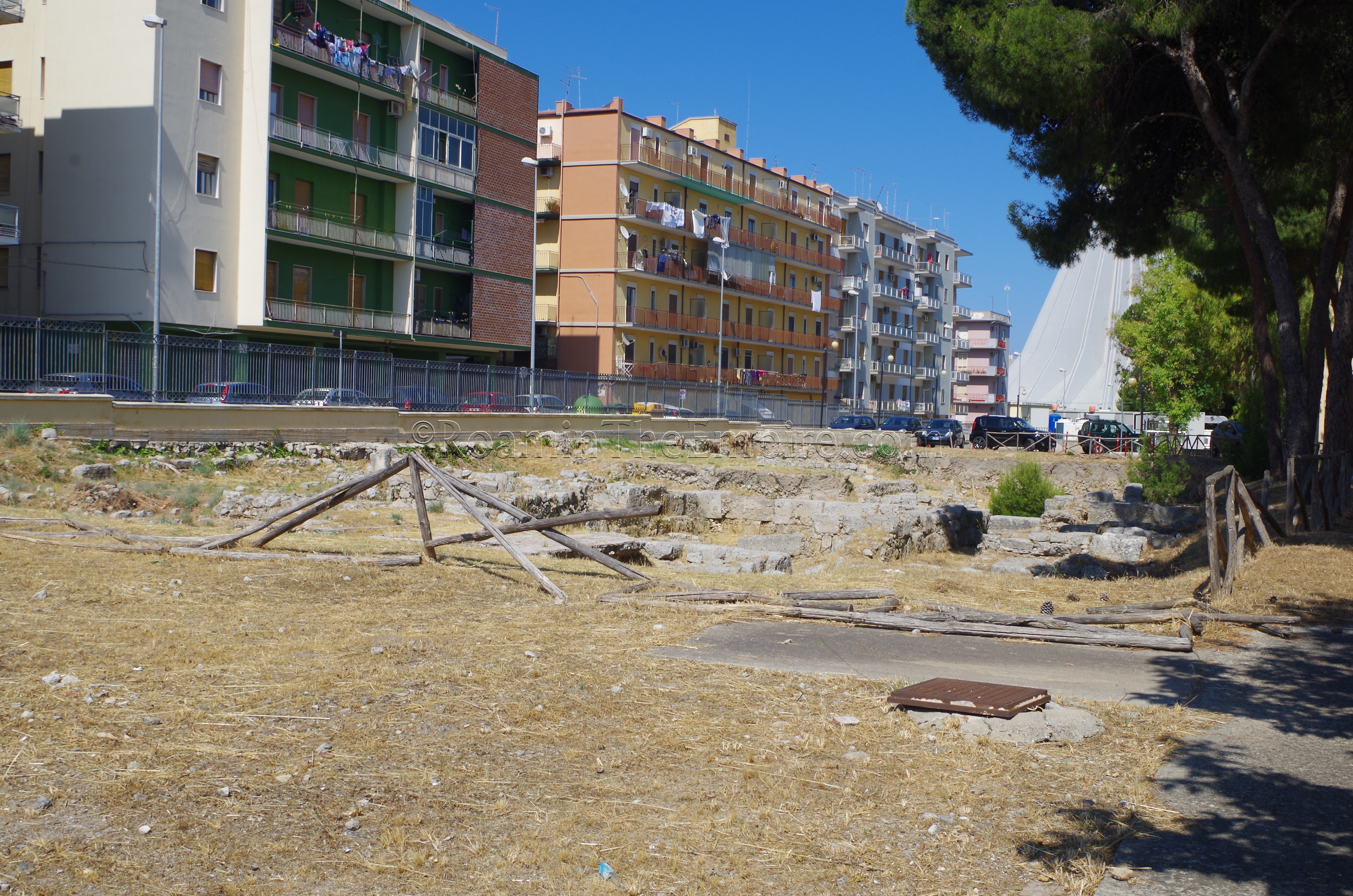
Between the Parco Archeologico Neapolis and the Santuario della Madonna dell Lacrime, at the intersection of Corso Gelone and Via Demostene, is a section of exposed ancient architecture. This is apparently the location of some habitations, probably from the Greek period of occupation, but, I could find little information on them. Like the previous area, access is largely blocked off, though this seems to be more due to the remains being on the grounds of a hospital (once inside the gates, access to the remains seems to be less limited). Unlike the Zona Archeologica di Piazza della Vittoria, the remains were not overgrown, so, walking around the fenced area, most of what is there can be seen from the outside.
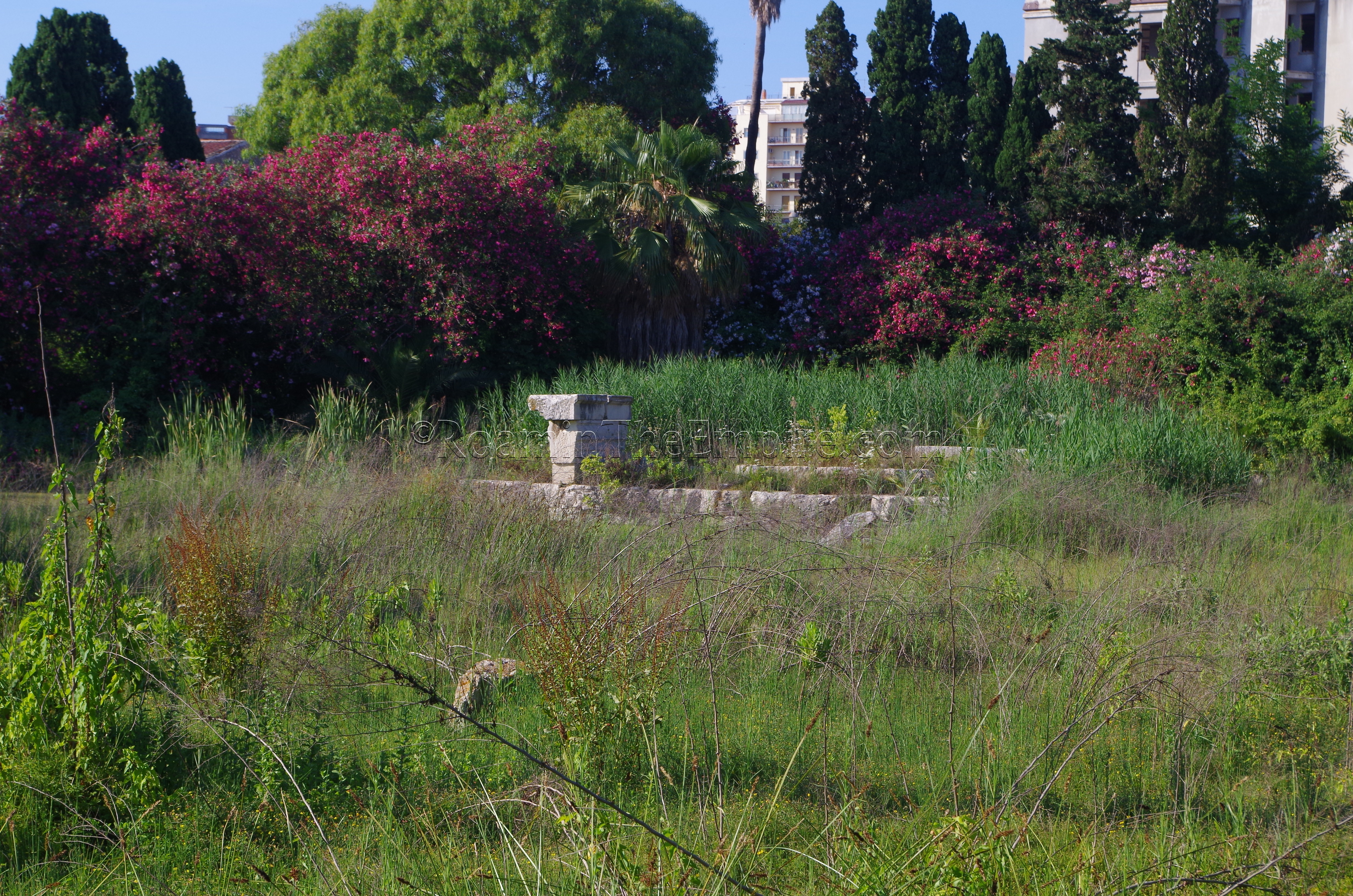
Just to the southwest of the train station, along Via Elorina at roughly 54, is a site that is alternatively referred to as the Roman Gymnasium or the Roman Theater. What is located here is a small temple, surrounded by a portico and attached to a small theater. The portico seems to be dated to the 1st century CE, while the theater and temple to the late 2nd century CE. The temple has sometimes been identified as being associated with Isis and/or Serapis, but the presence of a theater would be unique to that cult. An alternative has been suggested that the sanctuary belonged to the Dea Syria. Unfortunately, though, the whole complex is closed, and it can only be viewed from a distance through a fence, and the whole area is quite overgrown, revealing very little of the architecture.
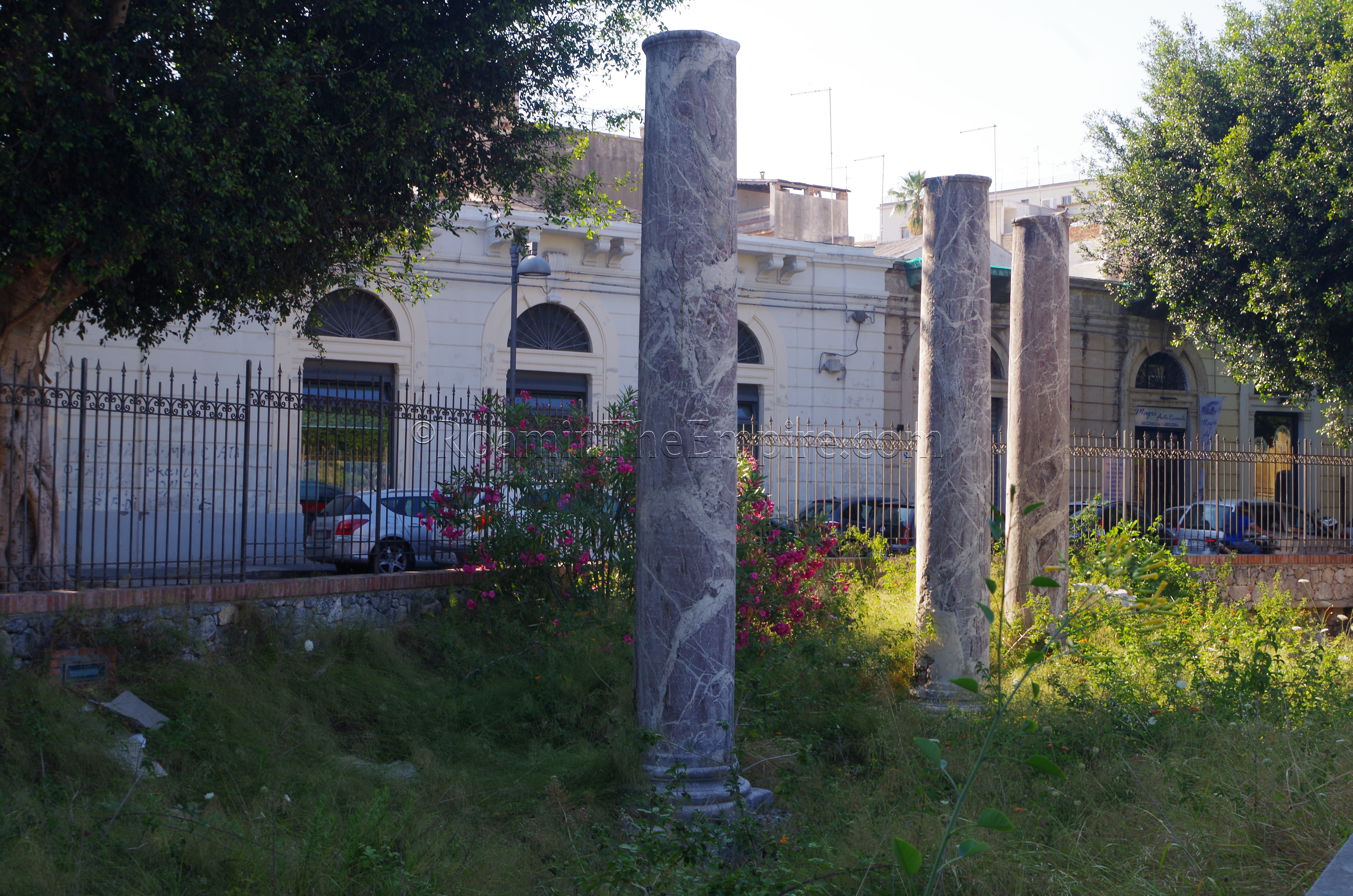
Heading towards Ortygia is a large park area, the Foro Sircusano, which is bisected by Corso Umberto I. On the north side of Corso Umberto I, towards the west end of the park, near the piazza in the middle, are the remains of the Roman forum of Syracusae. Three columns are standing, while there is a further four column bases present. Some of the paving of the forum is also apparently present, though the area was a bit overgrown when I visited, and the pavement was not visible. This also obscured several of the column bases. The forum dates to the imperial period, perhaps following the arrival of the Augustan colony. The park is free and open, though there are gates, so it presumably closes at some point, possibly at sunset or perhaps by 21:00.
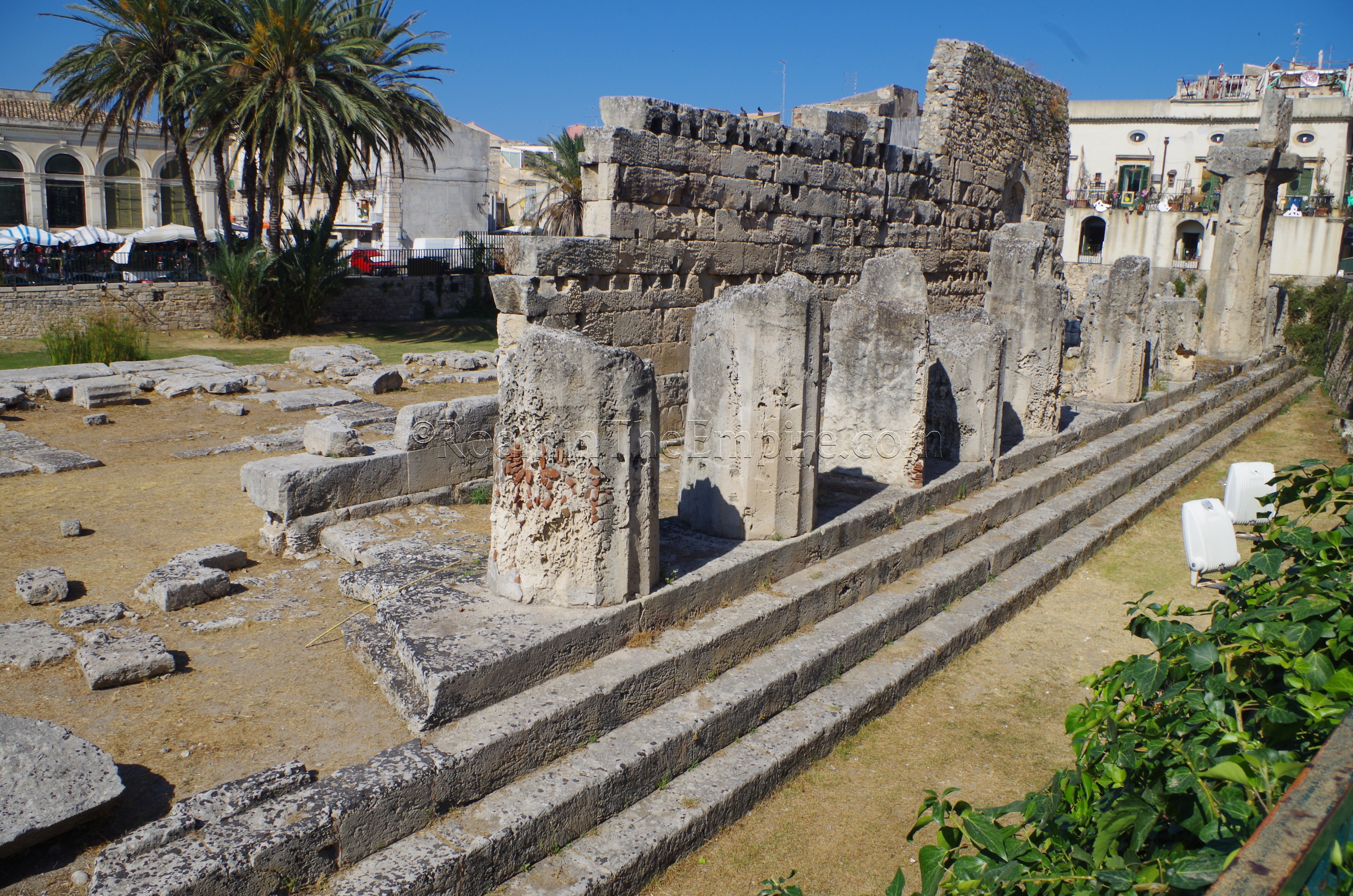
Further on, after crossing over to the island of Ortygia, at the end of Corso Umberto I are the remains of the Temple of Apollo. The Doric temple was constructed in the early 6th century BCE, making it the oldest of its type on the island. An inscription attributes the construction of the temple to Kleomenes, son of Knidieides, and of the columns to Epikles. There is no access to the temple itself, though a sign posted seemed to indicate there were occasions, a few times that month, in which there were free guided visits into the area of the temple. Most of what remains here is the crepidoma of the temple as well as a significant portion of the south wall and several of the 17 columns that originally ran along the south side of the temple. The currently standing temple may have replaced an earlier temple at that location, probably also dedicated to Apollo.
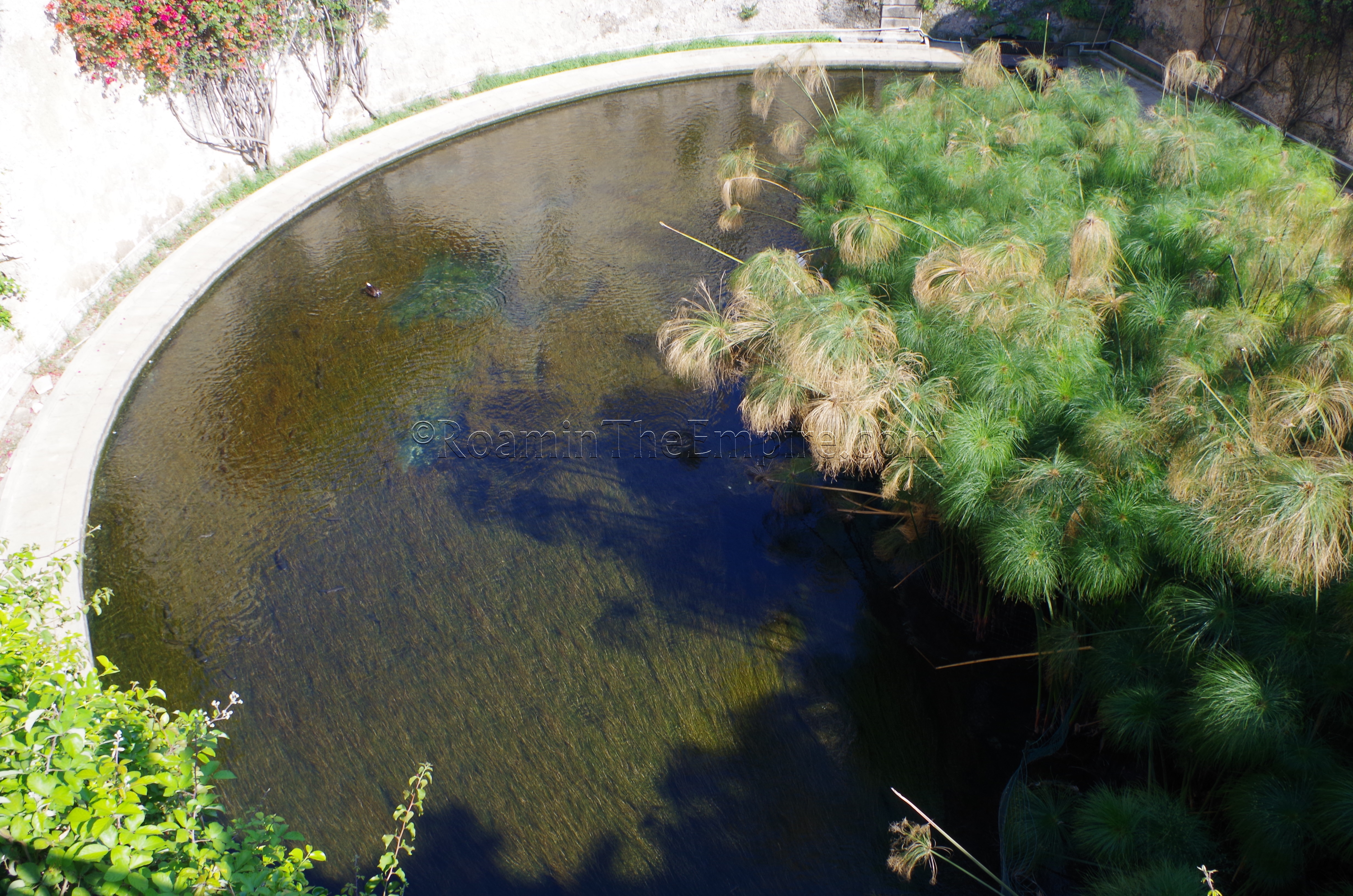
A couple of blocks to the southwest of the Temple of Apollo, along the southwest side of the Via Salvatore Chindemi, is the Porta Urbica, the entrance to the Ortigya fortress from the Greek period following Dionysius I’s fortification building program. Going south along the western coast of the island, one encounters the location of the Fountain of Arethusa at the Largo Aretusa. The spring, which provided fresh water to the island and had the mythological connection to the story of Arethusa and Artemis, for whom the island was named. This was also the point at which the Romans were able to enter the fortress and thus end the siege of Syracuse in 212 BCE. While the surroundings and infrastructure at the fountain is all modern, the spring itself is of particular interest in the ancient history of the city and of classical mythology.
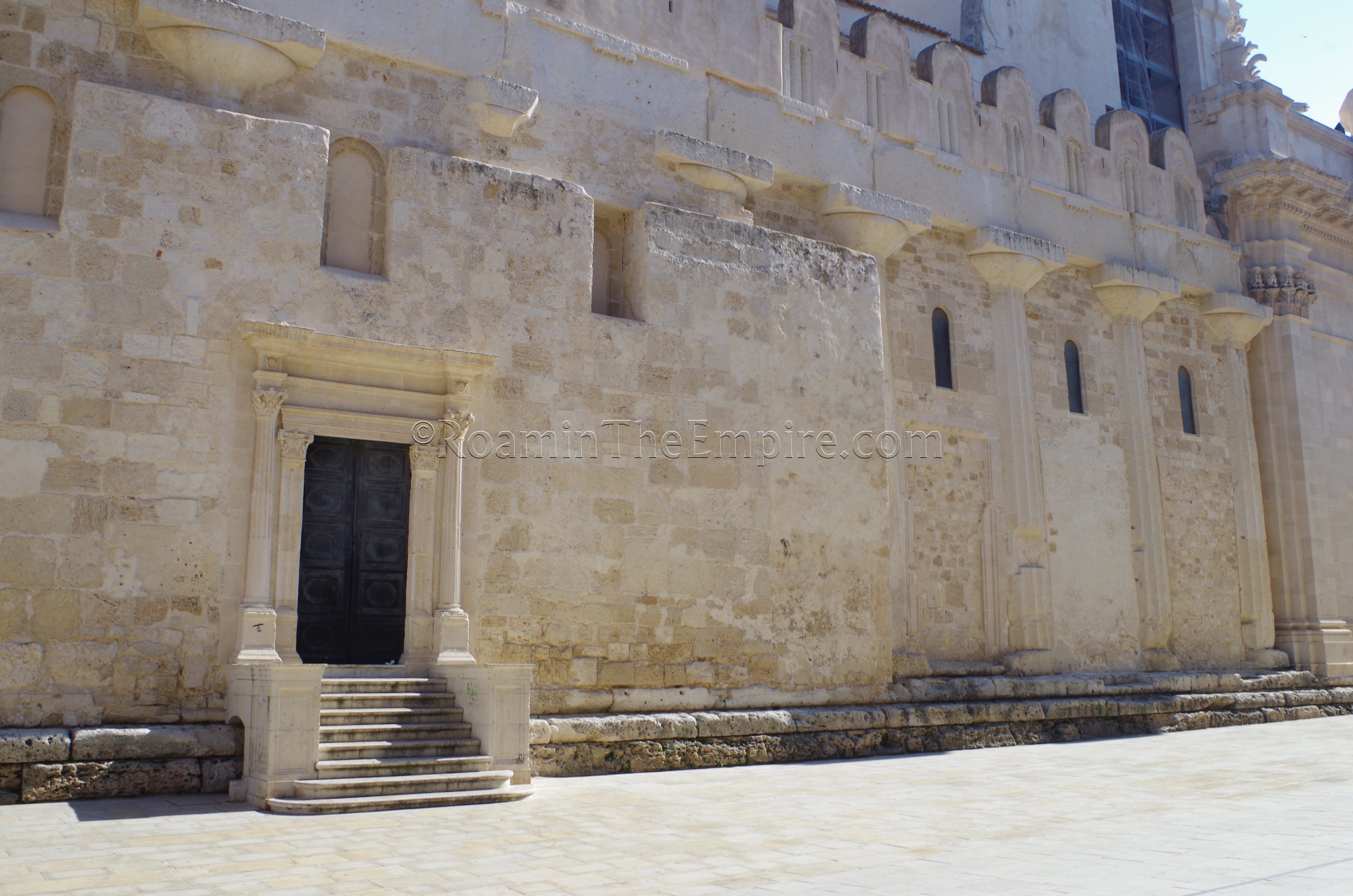
The final point of interest is nearby at the Duomo di Siracusa, just northeast of the fountain. Much of the north wall of the duomo incorporates columns from the north side of the Temple of Athena. The Temple of Athena was constructed by the tyrant Gelon following his victory over the Carthaginians at the Battle of Himera in 480 BCE. A cult site seems to have existed on that spot as early as the 8th century CE, and an altar found in excavations has been dated to the 6th century BCE, preceding the current temple. Cicero mentions the temple as having been a victim of the looting of Verres. Additional columns are visible inside the cathedral, which is open Monday through Saturday from 9:00 to 18:30 between April and October, and from 9:00 to 17:30 the rest of the year. Entrance is 2 Euros.
Overall, a good portion of Syracuse can be seen in a single day trip from Catania, which is how I approached the city. The train schedule was rather limited the day I went, I believe there was a train strike reducing the number of trains, so I was a bit rushed at times. I would have, however, liked a few more hours there to investigate some things further. A full day might be quite enough for most, but, an additional half a day probably would have been ideal.
Sources:
Cicero, Ad Verrem, 1.21, 2.
Cicero, Pro Planco, 27.
Diodorus Siculus, Bibliotheca Historica, 5.3, 11.67, 11.72-73, 11.76, 13.18-19, 14.7-9, 14.18, 14.62-75, 16.12-13, 16.70. 20.29.
Herodotus, Histories, 7.153-7.163.
Holloway, R. Ross. “Architect and Engineer in Archaic Greece.” Harvard Studies in Classical Philology, vol. 73, Harvard University Press, 1969.
Livy, Ab Urbe Condita, 21.49, 24.4, 24.21-34, 25.3, 25.23-31, 26.21, 27.16, 28.43, 29.1, 31.7, 31.29.
Lucian, Hippias, 2.
Ovid, Metamorphoses, V.572-641.
Plutarch, Marcellus, 14.
Plutarch, Timoleon, 22-26.
Polybius, Historia, 1.8-9.
Smith, Christopher John. Sicily from Aeneas to Augustus: New Approaches in Archaeology and History. Edinburgh Univ. Press, 2007.
Smith, William. Dictionary of Greek and Roman Geography. Walton & Murray, 1870.
Stillwell, Richard, William L. MacDonald, and Marian Holland. McAllister. The Princeton Encyclopedia of Classical Sites. Princeton, NJ: Princeton U Press, 1976.
Strabo, Geographica, 6.1.
Suetonius, Tiberius, 74.
Thucydides, Histories, 6.2-5, 6.66, 6.75, 6.97-103, 7.2-6, 7.78-97.
Wilson, R. J. A. “A Wandering Inscription from Rome and the So-Called Gymnasium at Syracuse.” Zeitschrift Für Papyrologie Und Epigraphik, vol. 71, 1988, pp. 161–166.


